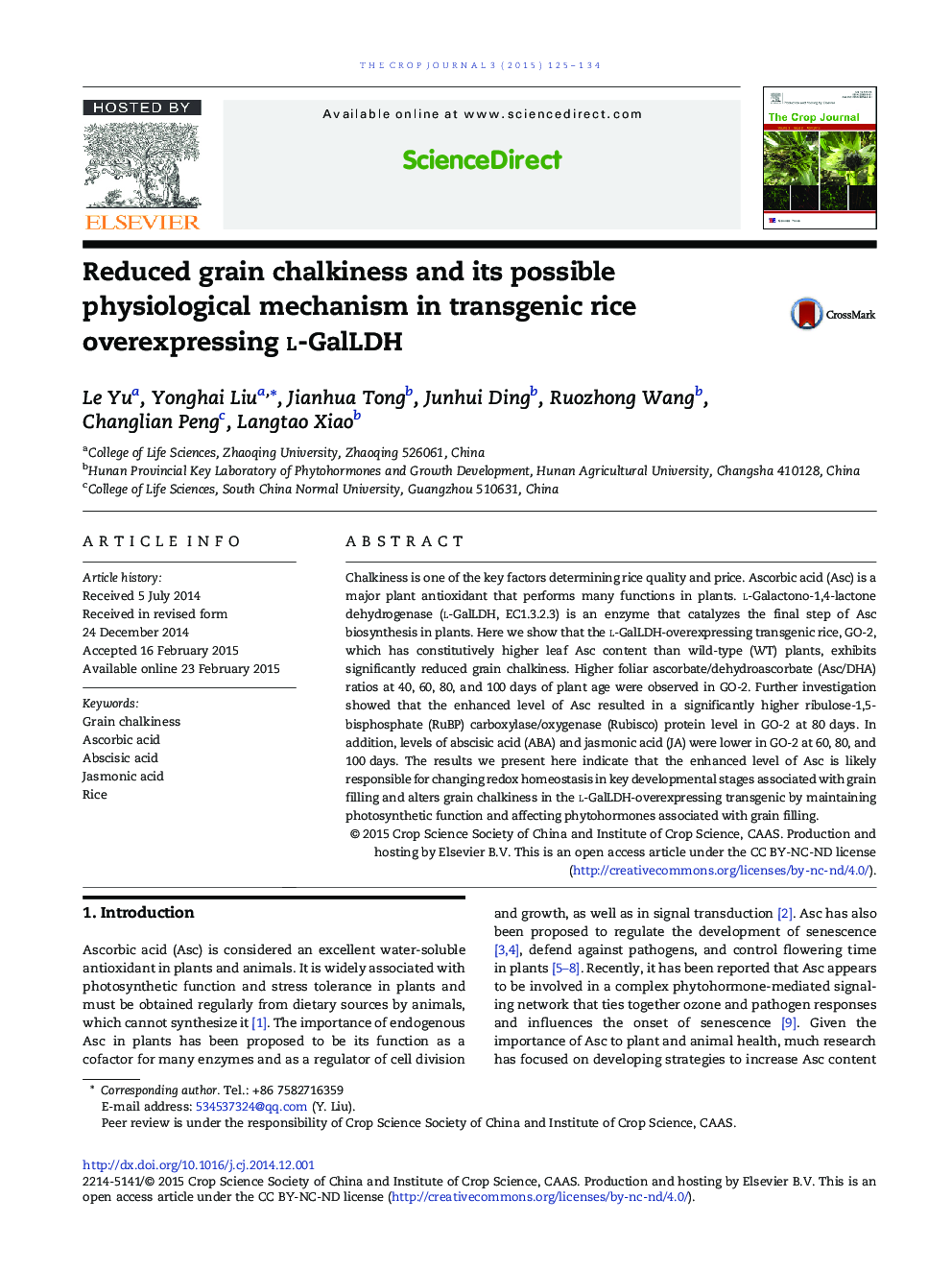| Article ID | Journal | Published Year | Pages | File Type |
|---|---|---|---|---|
| 2079485 | The Crop Journal | 2015 | 10 Pages |
Chalkiness is one of the key factors determining rice quality and price. Ascorbic acid (Asc) is a major plant antioxidant that performs many functions in plants. l-Galactono-1,4-lactone dehydrogenase (l-GalLDH, EC1.3.2.3) is an enzyme that catalyzes the final step of Asc biosynthesis in plants. Here we show that the l-GalLDH-overexpressing transgenic rice, GO-2, which has constitutively higher leaf Asc content than wild-type (WT) plants, exhibits significantly reduced grain chalkiness. Higher foliar ascorbate/dehydroascorbate (Asc/DHA) ratios at 40, 60, 80, and 100 days of plant age were observed in GO-2. Further investigation showed that the enhanced level of Asc resulted in a significantly higher ribulose-1,5-bisphosphate (RuBP) carboxylase/oxygenase (Rubisco) protein level in GO-2 at 80 days. In addition, levels of abscisic acid (ABA) and jasmonic acid (JA) were lower in GO-2 at 60, 80, and 100 days. The results we present here indicate that the enhanced level of Asc is likely responsible for changing redox homeostasis in key developmental stages associated with grain filling and alters grain chalkiness in the l-GalLDH-overexpressing transgenic by maintaining photosynthetic function and affecting phytohormones associated with grain filling.
